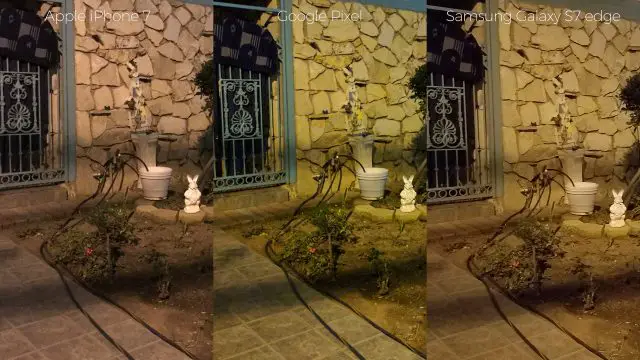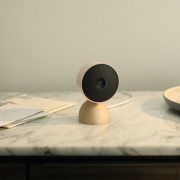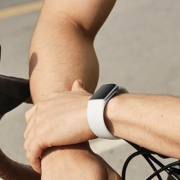We’ve reached a point in mobile photography where just about every high-end smartphone these days is more or less capable of taking a perfectly good photo. At this point, all we can do is nitpick, zooming into 100% crops and analyzing every last pixel. By now we’ve all heard Google’s claims that the camera in their new line of Pixel smartphones isn’t just one of the best smartphone cameras on the market — it’s the king of them all.
Well, that’s if DxOMark’s review is to be believed, with the Google Pixel receiving high-marks in just about every area, narrowly beating out even the Samsung Galaxy S7 with its camera prowess. So what’s so special about the Pixel? Well, on camera hardware is on part with most other offerings. The Pixel is equipped with a 12.3MP Sony IMX378 image sensor that features 1.55um pixels and an f/2.0 lens to help capture more light. There aren’t too many devices using this same hardware, but the guys at XDA had a great write up of everything the sensor is technically capable of. But it’s in the software and Google’s finely tuned image processing where the Pixel truly shines.
How does HDR+ work?
We know, most phones these days feature some type of HDR mode in their camera app (with varying results). Even last year’s Nexus devices featured HDR+, but nobody is doing it the way Google does on the Pixel. First off, HDR+ is now instant. There’s no delay when capturing photos like we saw on previous Nexus devices. That’s because the Pixel’s HDR+ is leveraging the Snapdragon 821’s new Hexagon digital signal processor processor.
HDR+ Off, Auto, On
This allows the camera to begin capturing RAW photos in the background as soon as the camera app is opened. These images are all underexposed and once combined (after the shutter button is pressed), produces a much sharper, less noisy shot with dramatically more detail in highlights that would normally be blown out in other smartphone cameras. Unfortunately, this doesn’t do much for lightening up shadows (something the iPhone 7 or Galaxy S7 excel at with their respective HDR methods), but it is what it is. Because the Pixel’s camera doesn’t have to take a single loooong exposure like on other devices, it’s a big reason why Google didn’t feel the need to include OIS on the Pixel — they don’t need it. As for video, we’ll get to that later…
HDR+ Off, Auto, On
That’s not to say the images the Pixel captures are perfect. There’s a fair amount of noise. A great deal more than what you normally see on competing devices and depending on who you ask, this could be off-putting. This was actually a conscious move by Google to preserve finer details in photos — a stark contrast to the noise filtering you see on most smartphones these days, resulting in a watercolor-like effect that looks artificial. With the Pixel, you’ll see concrete for what it is, couch fibers, hair, pimples — every detail and imperfection. Sure it’s a little more noisy, but it’s a worthwhile trade-off if you ask us.
Although we’d give the Pixel the slight edge in outdoor daytime shots, it’s during moderate to low light situations where the phone absolutely blows past the competition. Simply put, no phone out there can match this level of image quality. We’re not talking about taking photos in pitch darkness, but indoors or restaurant lighting where devices like the iPhone 7 or Galaxy S7 struggle. Not only do they lose much of their detail, photos are mostly washed out at higher ISOs, practically monochrome in some instances.
The Pixel’s HDR+ on the other hand, pulls much richer colors in low light — all without blowing out highlights, a pitfall of other cameras who use slower shutter speeds to capture more light. In almost ever instance we could test, the difference was like night and day. The Pixel’s HDR+ is a force to be reckoned. I will say I think I still prefer the (slower) method on previous Nexus devices, but it’s really hard to compete with zero shutter lag. For more on how the Pixel stacks up against the Apple iPhone 7 and Samsung Galaxy S7 Edge, check out our comparison post here.
The downside to using HDR+ Auto on the Pixel? There really is none — so leave it on 24/7.
My only issue with HDR+ Auto/On
My only complaint is the way Google named the two HDR+ shooting modes. On most devices, “HDR Auto” means the phone decides when is the best time to use HDR (like when there’s a lot of really dark and bright areas in a shot). Sometimes it engages, sometimes it doesn’t. This is much different on the Pixel where HDR+ Auto means HDR+ will always be used. For every shot. The only time it’s not used is when you fire off too many shots and the phone’s buffer can’t keep up. For instance, taking 5 shots in rapid succession will cause HDR+ to skip the 6th and subsequent shots unless you give it a quick second to finish buffering.
I also thought that HDR+ Auto would occasionally trigger that extreme HDR we see with HDR+ On, but it doesn’t. So once again, having HDR+ Auto enabled means it will always be used.
HDR+ On, aka Super HDR+
When it comes to the HDR+ On, you may be thinking that (like with every other camera out there) it simply means HDR+ will be used for every shot. But if that’s already what HDR+ Auto does — what the heck is the difference? Well, think of HDR+ On as a more extreme version of HDR+ Auto. Like Super HDR+ if you will.
Where as HDR+ Auto gently brings down highlights, HDR+ On is much more aggressive. It’s closer to real HDR photographs you see with DSLRs which means it often times comes off as looking artificial. It doesn’t do much to bring out shadows, but sometimes you’ll find a teensy bit more detail in dark areas.
There’s decent shutter lag too, just like with HDR+ on older Nexuses. Shots take about 1 second to fully capture a photo. It’s definitely not for everyone and unlike previous Nexus devices — where HDR+ On was perfect for low lighting conditions — there’s significant noise using HDR+ On in low light (much more than HDR+ Auto). But if you’re taking a picture of a building at night and want to get all the brightly lit details inside, it can be perfect for that.
Front facing camera using HDR+ Off, Auto, On
The front facing camera also reaps the benefits of the Pixel’s amazing HDR+ modes. There’s a crazy amount of color detail (almost to a fault), with selfies that are always perfectly exposed, even in low light. On every other smartphone, I never understood how people could willingly choose to use a sh*tty front facing camera to capture a special moment but on the Pixel, there’s very little sacrifice. Simply put: thanks to HDR+, this is the best front facing camera around, hands down.
Video so stable, it’s like magic
Like most other high-end devices these days, the Pixel is capable of shooting 4K UHD video. The difference is Google is using software tricks to keep the video steady — not OIS. You may think this wouldn’t be as nice a hardware solution, seeing as how traditional EIS zooms in on a video, sacrificing image clarity in an effort to smooth out shakes and jitters.
The Pixel on the other hand uses a combination of the phone’s hardware (gyroscope) and software to help with the rolling shutter and smooth out video. There’s very little “jello” side-effect you see in other EIS solutions. While it works damn near perfect in outdoor daytime situations, it’s all but nullified in low light where the software has a difficult time figuring out what’s going on to keep video stabilized. See our results below.
Video with the front facing camera caps out at 1080p and although the quality is there, doesn’t seem to benefit from the same EIS as the rear camera.
One of my favorite features with video capture is the option to pause in the middle of video, making it perfect for capturing an event, birthday, or wedding, without having to worry about splicing together clips after the fact. There’s also the ability to snap “photos” while recording video, but it’s mostly just a screen cap of the video being recorded.
All in all, video on the Pixel looks great. It’s clean, stable, and one of the best reasons to own the phone (providing you don’t shoot too much footage after dark). My biggest gripe with video on the Pixel has been audio quality, which is still quite average. I have yet to test the audio in a concert setting, but will report back with my findings when I do.
Software
Although the Pixel’s camera software isn’t anywhere near as robust as you’d find on devices like the Galaxy S7 or LG V20, it’s still a big upgrade from previous generation Nexuses.
There’s no pro mode to fine tune every camera setting, but Google did update the app by adding the ability to adjust white balance (presets) and introducing the sometimes handy focus/exposure lock. AF/AE is activated by long pressing anywhere in the view finder and once engaged, allows you to manually adjust the exposure by sliding your finger up or down. It doesn’t give you a full range of exposure control, only 2 stops from where you initially locked it.
Other available shooting modes include:
- Slow Motion – 240fps at 720p, or 120fps at 1080p
- Panorama – There are 4 options for shooting a panorama: Horizontal, vertical, big, or fisheye
- Photo Sphere – Capture a full, 360-degree image
- Lens Blur – Create a shallow depth of field effect by blurring out the background of an object
The software is really nothing to write home about. It’s simple and intuitive and there are enough “fun” features to easily give the Pixel camera a leg up on the iPhone. The few manual controls are a nice addition, but we’re hoping this is just the beginning of what Google is planning for their camera app.
The only thing missing — at least for me — was an official Android alternative to Live Photos. Perhaps I’m alone in this, but Live Photos are easily one of my favorite camera features from the iPhone and if there was ever going to be a proper Android alternative, the Pixel would do it. I mean, it’s already shooting off a million photos in the background, just give us the option to turn those into Live Photos.
Performance
This is where we’ll talk briefly about the performance of the camera app. Launch times are extremely quick. Tap on the camera app and it launches in almost no time flat. Google also added a handy shortcut where double tapping the power button can wake the phone and launch directly into the app. Fire too quick, and HDR+ Auto might not activate (remember, it takes about a second for the phone to buffer the background photos it needs for HDR+).
When it comes to auto focus, the Pixel uses a combination of phase detection and laser auto focus for mostly stellar results. It’s quick and accurate in most settings, although nowhere near in the same ballpark as the Galaxy S7’s Dual Pixel auto focus. We did find that it can, at times, be somewhat inconsistent and you still get that hunting (focusing in/out) when it attempt to lock onto something. For when it does act up, tap to focus always comes in handy, although it forces the camera app to expose for whatever you just tapped.
The Pixel can also fire off bursts of photos by holding the shutter button, choosing the photo it feels is the “best” of the bunch (along with 7 runner ups). It’s called “Smartburst” and although you wont get the HDR+ benefits by shooting this way, it could be helpful when attempting to capture a fast moving subject. Smartburst can also creation GIFs from these bursts, or allow you to create a collage, which is a nice touch.
Beware the flare
Examples of the weird flaring I occasionally see pop up in some of my shots
Although I didn’t see this mentioned in most of the early reviews, I did notice some pretty apparent lens flares. It’s not all of the time, only whenever light — be it direct sunlight, light from a window, or even a ceiling light — would hit the camera the right way.
The crazy part is not only the rear camera that suffers from this, it also popped up when using the front facing camera as well. Not a huge deal-breaker by any means, but something worth mentioning.
*****
Mobile photography is always inconsistent at best and there’s no single smartphone camera that excels in every area. Whereas most manufacturers are hellbent on tackling the issue with bigger and badder hardware (higher megapickles, dual-cameras, OIS or GTFO), Google is focusing on computational photography. They’re not just working harder, they’re working smarter.
For the first time it feels like Google is finally taking mobile photography seriously. While individual tastes may differ, there’s really no denying the results. From brightly lit environments, to low light, to video stabilization and the like, it’s going to be black magic as far as most people are concerned. That’s how good the Pixel camera is.
Yes, there are plenty of great options out there when shopping around for a great smartphone camera (even mid-range-ish $400 devices), but we can safely say — without a shadow of a doubt — the Pixel safely sits at the top of that list. We’re sure to see further advancements in this space and although it’s not by a huge margin, Google can finally say that for a brief moment in time, they were the best. Good job, Google. You earned it.












Comments